Bonsai trees are beautiful plants that require special care during the colder seasons. They thrive in warm temperatures and should never be exposed to freezing temperatures. If you live in a temperate climate where winters are harsh, you’ll want to take precautions to prevent damage to your bonsai tree.
It’s essential to learn how to overwinter your bonsai tree to protect it from the cold elements.
This guide will include the best types of Bonsai trees for winter months and tips to help you protect your bonsai tree from the cold weather.
- Related article: Growing Bonsai Trees 101
5 Key Takeaways on Protecting Bonsai Trees During Winter
- Bonsai trees enter a dormant state during winter, which is vital to their health. Cold-hardy species can thrive outdoors in sheltered spots, while tropical species need to be moved indoors.
- Watering should be reduced during dormancy; the soil should remain slightly moist but never waterlogged.
- Ideal winter bonsai include cold-hardy types like Maple, Hornbeam, Larch, Redwood, Juniper, and Elm, which can withstand low temperatures.
- Tropical bonsai like Ficus and Carmona thrive indoors during winter, where conditions can be controlled for light and humidity.
- To protect bonsai in winter, choose sheltered locations, insulate pots, monitor temperatures, avoid direct sunlight, and check for pests regularly.
Can Bonsai Survive Winter?
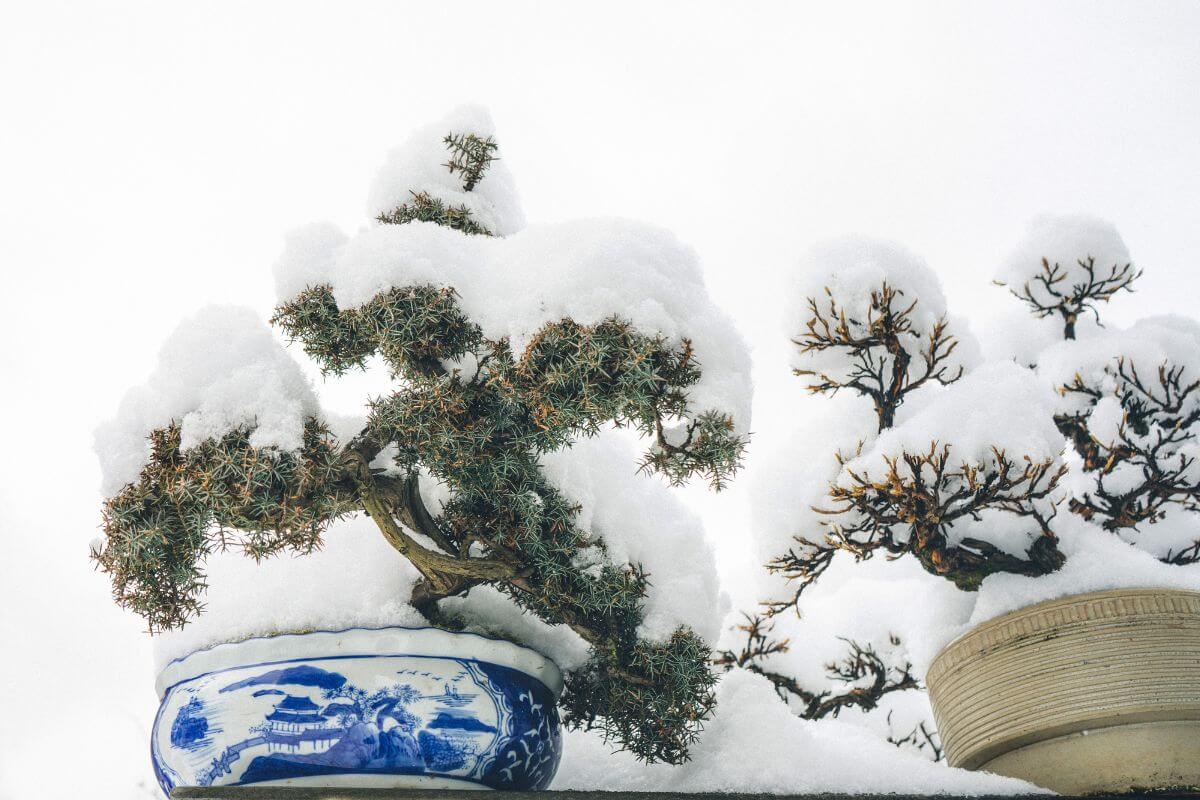
Bonsai trees can survive winter by going into a dormant state, but they need special care during this time. Here’s how to help them stay healthy:
- Water Management – During dormancy, water the bonsai less often. Keep the soil slightly moist, but avoid making it waterlogged or completely dry.
- Cold Protection – Hardy bonsai species should stay outdoors in sheltered spots to protect them from harsh weather. Tropical bonsai species, on the other hand, should be moved indoors when temperatures drop.
Best Types of Bonsai Trees for Winter
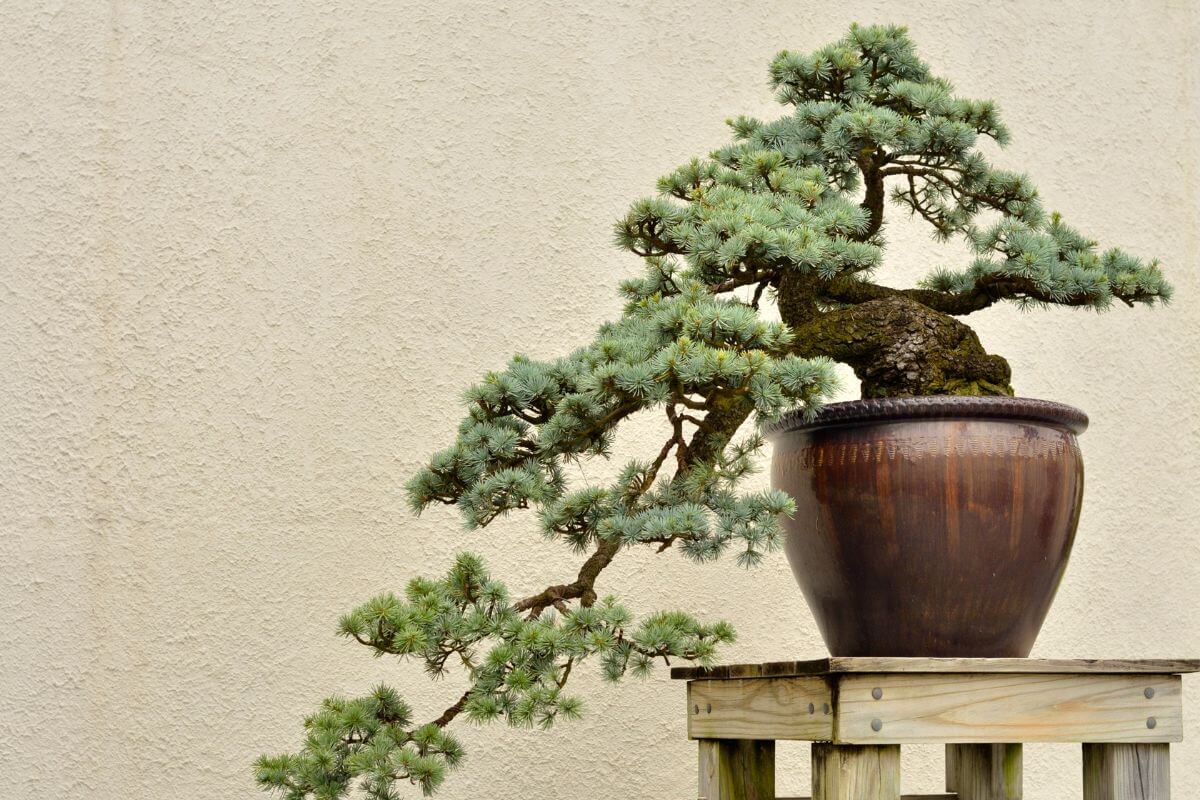
The best bonsai trees for winter are cold-hardy types that can survive low temperatures. Here are some great options:
- Maple Bonsai – These trees are known for their bright fall colors and can tolerate cold weather.
- Hornbeam – This resilient species thrives in colder climates.
- Larch – A deciduous conifer that can handle freezing conditions.
- Redwood – Another hardy choice, perfect for colder environments.
- Juniper – Popular and adaptable, these evergreens are well-suited for winter survival.
- Elm Trees – Especially the Chinese elm, which is known for being very hardy.
These species can typically endure temperatures as low as -10°C (14°F) or even lower, making them ideal for winter bonsai cultivation.
If you own subtropical or tropical trees that don’t fare well during the winter, consider bringing them inside. The same applies to deciduous trees that don’t need light when they are not in leaf. Unlike the more cold hardy trees that can thrive outdoors, you will need to keep these trees indoors or in a cold frame to ensure they survive the cold winter months.
Why Indoor Bonsai Trees Are Ideal for Winter
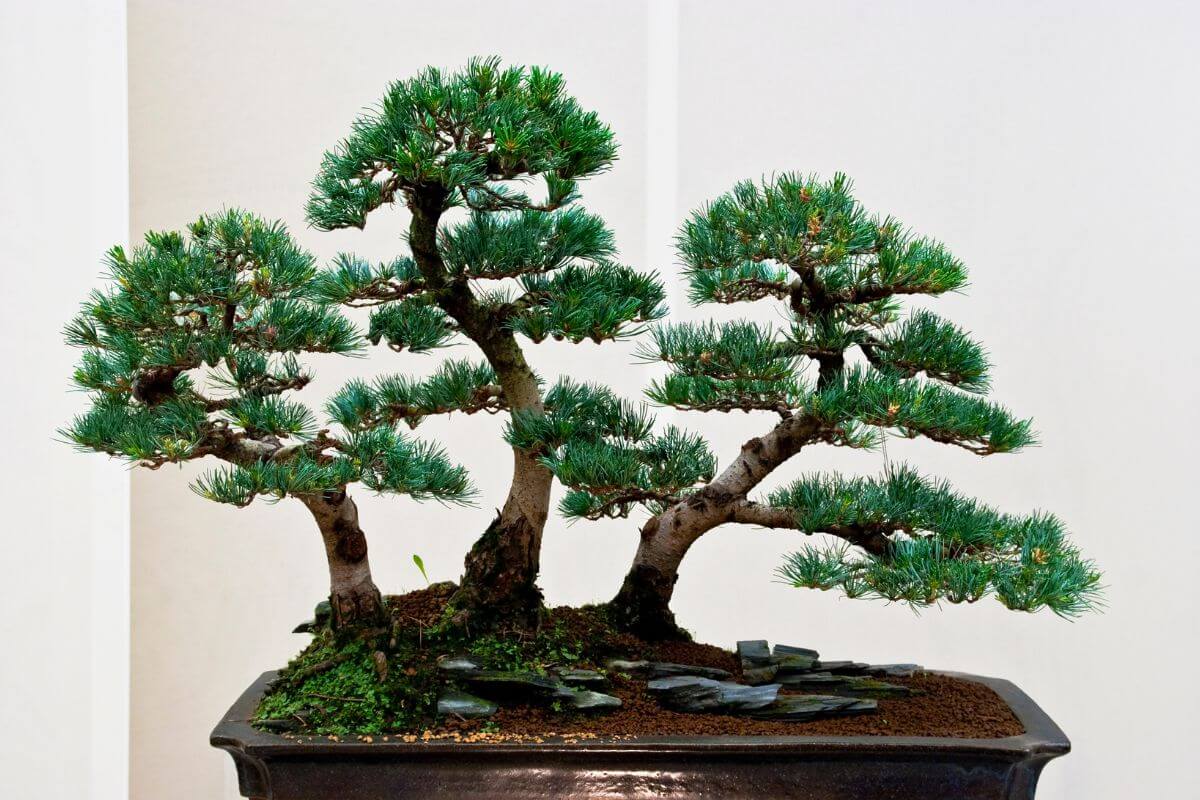
Many indoor bonsai, like the Ficus and Carmona, are tropical or subtropical species that thrive in warm conditions and don’t need a winter dormancy period. This makes them well-suited for indoor environments where temperatures stay above 60°F (15°C) during the winter.
Indoor settings provide better control over light, humidity, and temperature, which are essential for the health of tropical bonsai. These trees require consistent care, including high humidity and bright, indirect light, conditions that can be hard to achieve outdoors in the winter.
Keeping bonsai indoors also protects them from freezing temperatures and harsh winter weather, ensuring their survival and promoting healthy growth throughout the season.
- Learn more about Indoor Bonsai Varieties
Steps to Protect Bonsai During the Winter
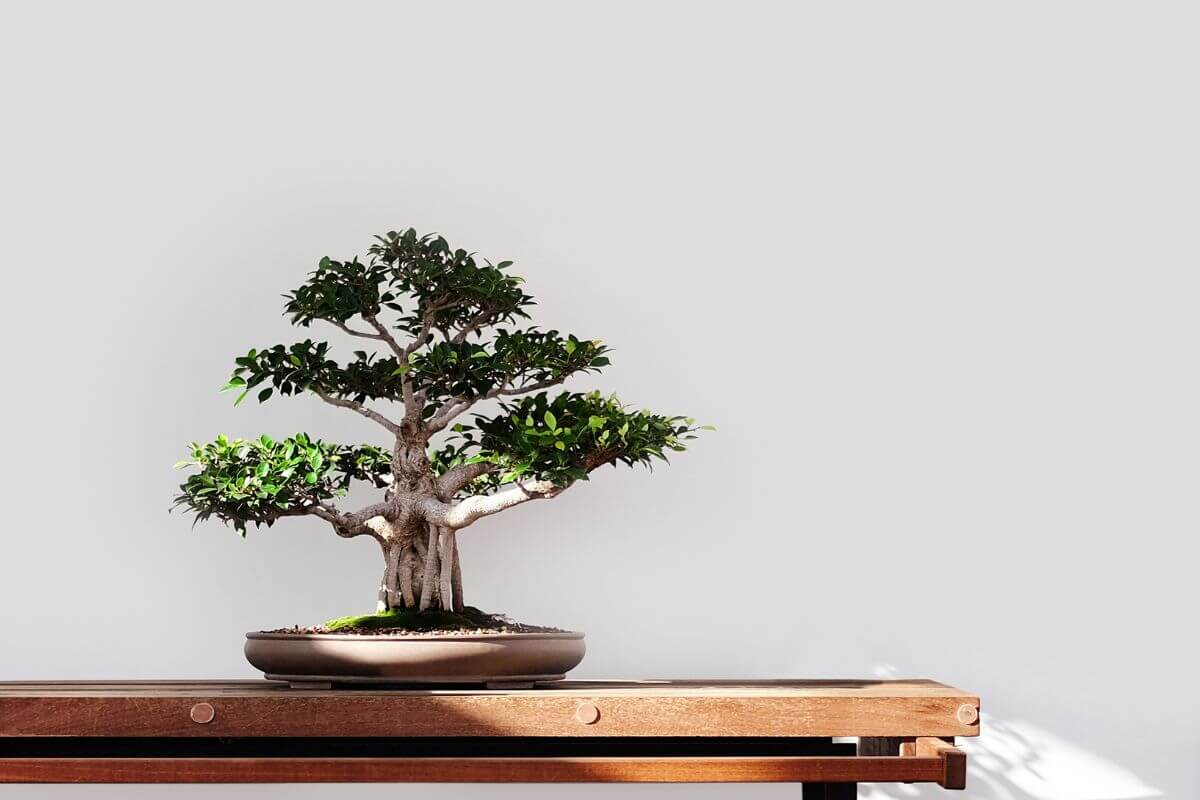
To keep bonsai trees safe during the winter months, follow these easy steps:
- Bring Tropical Species Indoors – Move tropical and subtropical bonsai inside when temperatures drop below 60°F (15°C). Place them in bright, humid areas away from heating vents to help them thrive.
- Choose the Right Location – Place outdoor bonsai in a sheltered spot, away from strong winds, such as against a wall or in a corner of your garden. This helps reduce evaporation and protects them from frost damage.
- Use Insulation – Wrap pots in insulating materials like Styrofoam or burlap to keep the roots warm. You can also sink the pots into the ground and cover the roots with soil for extra protection.
- Monitor Temperature – Try to keep temperatures between 33°F and 40°F (1°C to 4°C). Avoid exposing your trees to high temperatures for too long, as this can interrupt their dormant state.
- Watering Needs – Water bonsai only when the soil feels dry, since they need less moisture during dormancy. Make sure the soil is slightly damp but not soggy to prevent root rot.
- Avoid Direct Sunlight – Keep bonsai out of direct sunlight to prevent frost cracks from sudden temperature changes. A shady spot helps maintain stable temperatures.
- Check for Pests – Regularly inspect your trees for insects and diseases, as these can thrive in winter if not addressed.
Understanding Dormancy and After Winter Dormancy in Bonsai
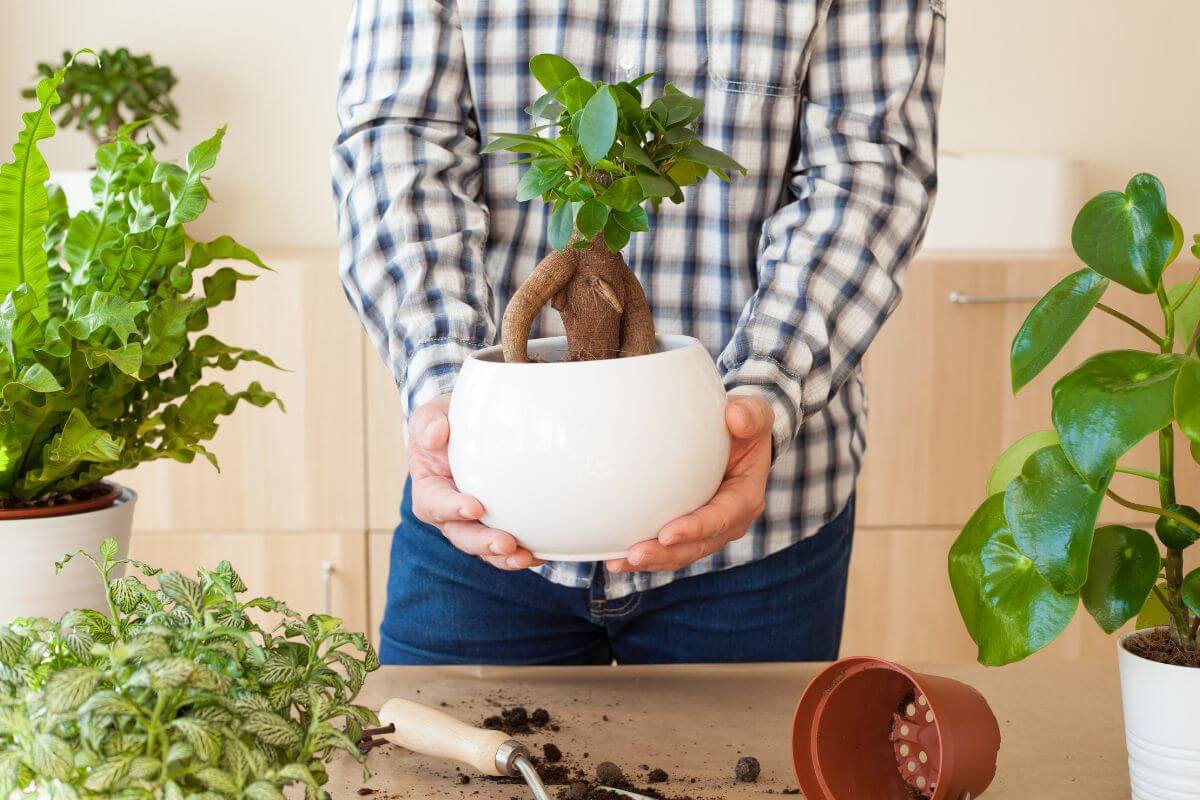
Bonsai trees go through a dormancy period in winter, which is vital for their health and future growth. This dormancy helps the trees get ready for spring by encouraging root growth and overall health. It’s important to provide the right conditions, such as cooler temperatures and reduced watering, to support this natural cycle.
Below is a summary of key aspects of bonsai dormancy in winter and spring, along with tips on how to adjust your care in each season for optimal growth.
| Dormancy Phase | Aspect | Details |
|---|---|---|
| During Winter Dormancy | Reduced Activity | Bonsai slow down their metabolism, needing less water and no fertilizer. Deciduous species lose leaves, reducing photosynthesis and the need for light and nutrients. |
| Watering Needs | Monitor soil moisture closely. Water only when the soil is dry to prevent root rot, as evaporation slows in colder temperatures. | |
| Protection from Elements | Protect bonsai from extreme cold and wind by insulating pots or placing trees in sheltered areas to prevent frost damage. | |
| After Winter Dormancy | Signs of Awakening | As temperatures rise in spring, bonsai show signs of new growth. Move them outside carefully after the frost threat passes. |
| Repotting and Pruning | Late winter or early spring is the best time to repot and prune before buds swell, stimulating new growth for the active season. | |
| Monitoring New Growth | Keep an eye out for late frosts that could harm new leaves. Protect tender shoots from unexpected cold to ensure their survival. |
Bonsai Trees in the Winter Final Thoughts
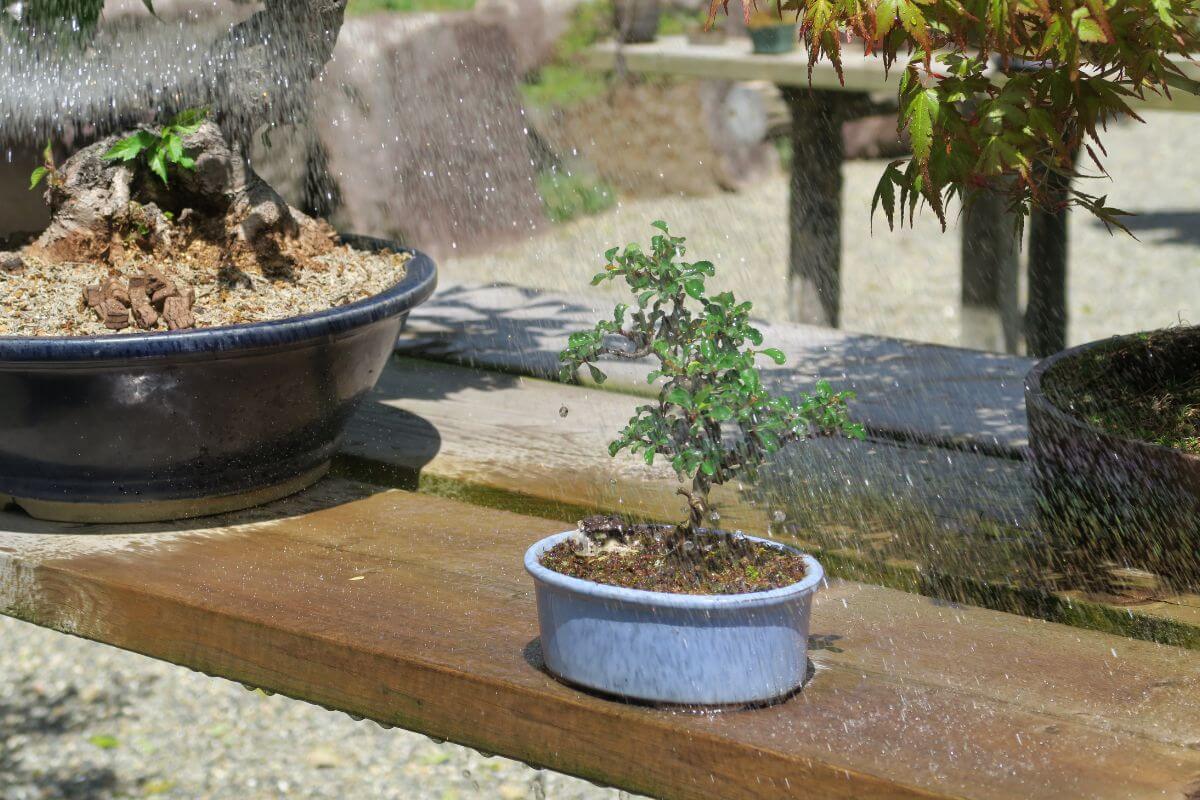
Taking care of bonsai trees during winter requires understanding their unique needs and providing the right conditions for survival. By following these protection tips and recognizing the importance of dormancy, you can ensure your bonsai not only survive but also thrive as the seasons change.
With proper care, your bonsai will awaken in spring ready for new growth, adding beauty and tranquility to your space for years to come.
Bonsai Trees in Winter FAQs
1. What Do I Do With My Bonsai in the Winter?
In winter, protect your bonsai from freezing temperatures by moving it indoors or into a sheltered spot. Keep it in a cool, bright area and reduce watering.
2. How Cold Is Too Cold for a Bonsai?
Most bonsai trees can tolerate temperatures above 20°F (-6°C). Temperatures below this can harm the tree, especially if it’s not winter-hardy.
3. Can You Grow Bonsai Indoors in Winter?
Yes, you can grow bonsai indoors in winter, but ensure it gets enough light and maintain a stable, cool temperature.
4. Do You Feed Bonsai in Winter?
No, you typically do not feed bonsai in winter. Most bonsai need less fertilizer during the dormant season.
5. Do Bonsai Lose Leaves in Winter?
Some bonsai trees, especially deciduous types, lose their leaves in winter. This is a normal part of their life cycle.
For more on bonsais, check out these articles:








